Welcome! Here are the website rules, as well as some tips for using this forum.
Need to contact us? Visit https://heatinghelp.com/contact-us/.
Click here to Find a Contractor in your area.
If our community has helped you, please consider making a contribution to support this website. Thanks!
Double riser no drop header
Options

Snowmelt
Member Posts: 1,455
Here are pic of the install, I still didn’t find leak, I went from 260,000 btu to a 300,000 btu unit it still not making pressure i have a feeling that it’s undersized, but it’s making temperature. Can that be one reason it looses 30 gallons per day? 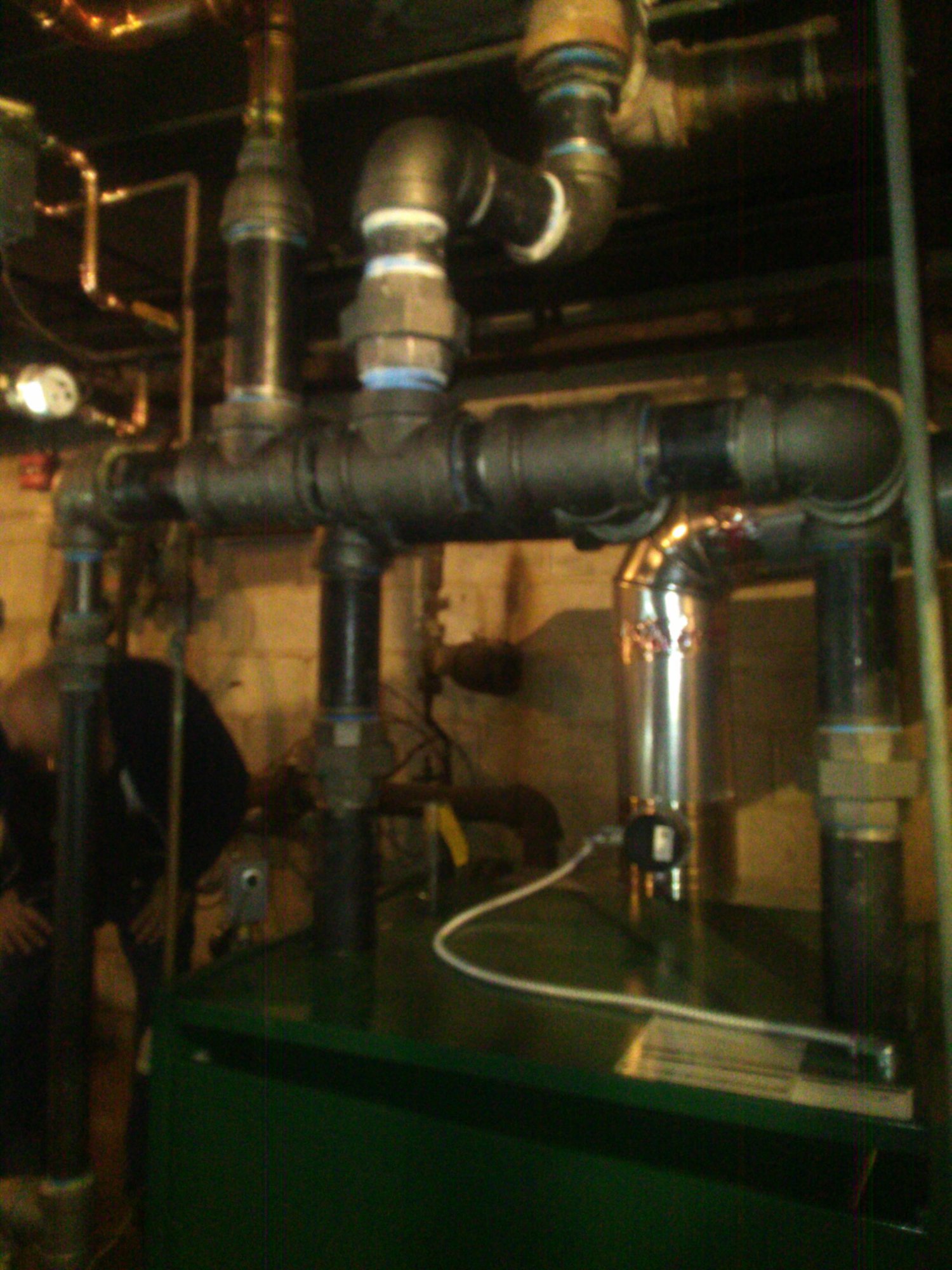



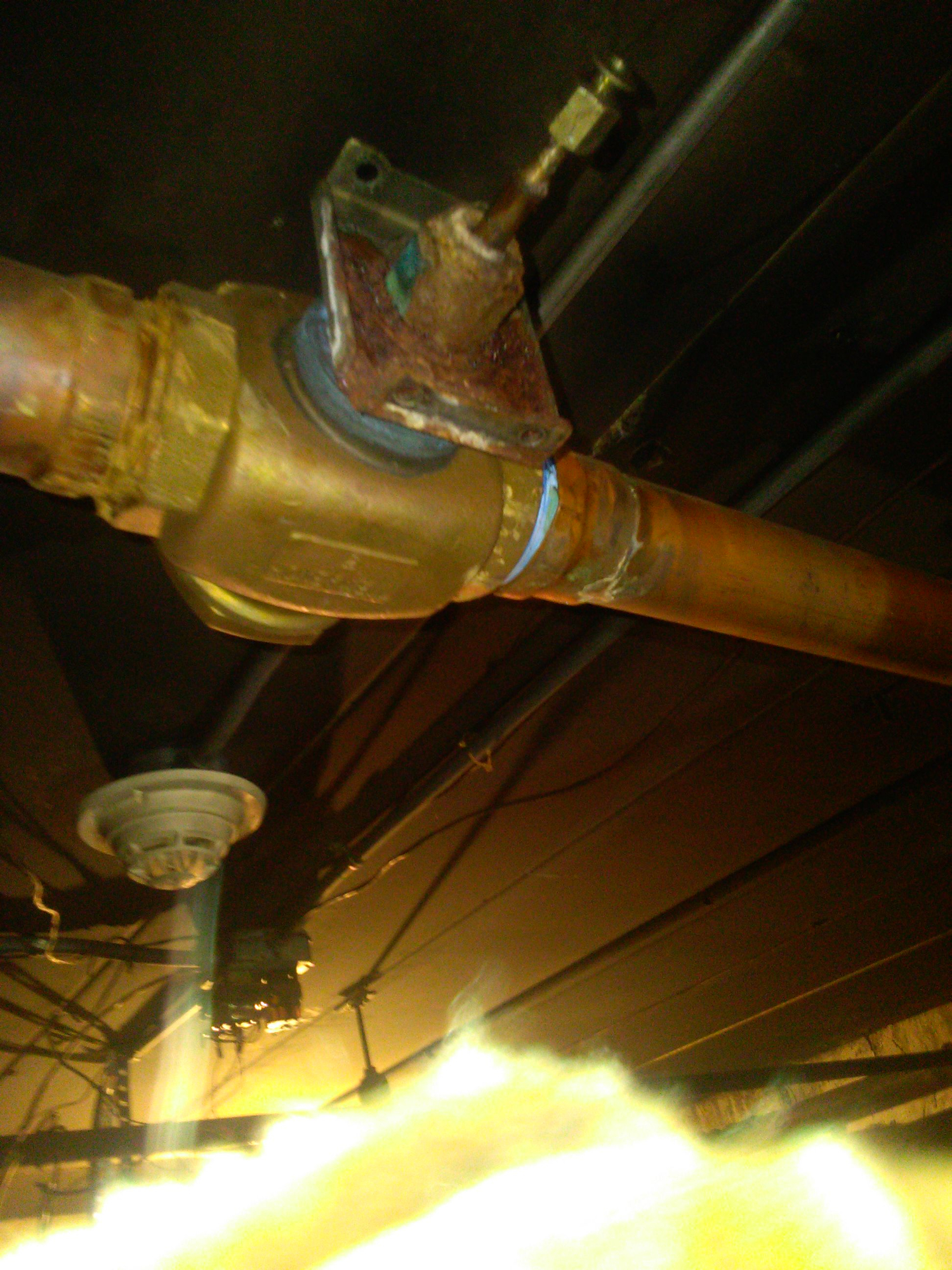

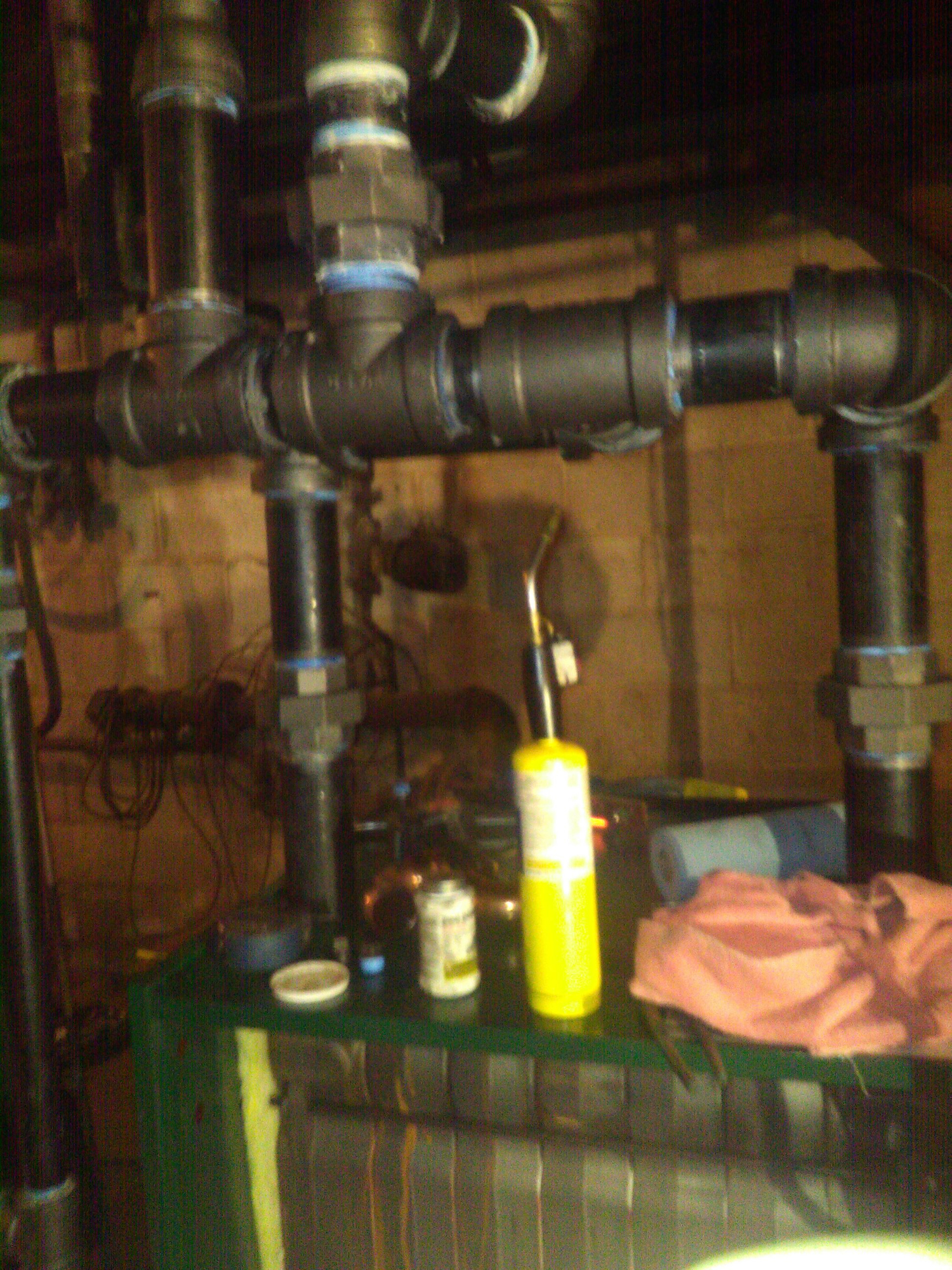


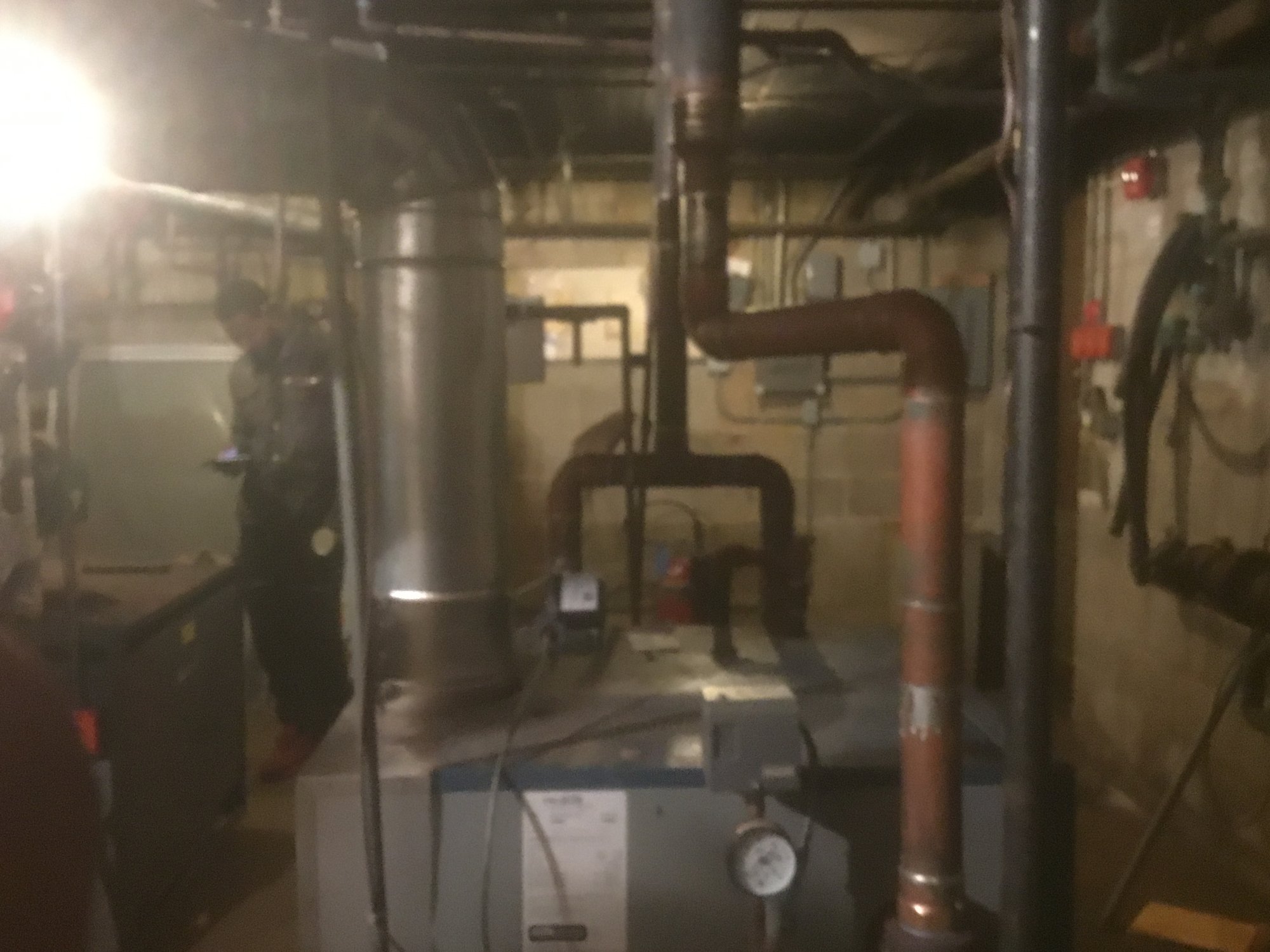
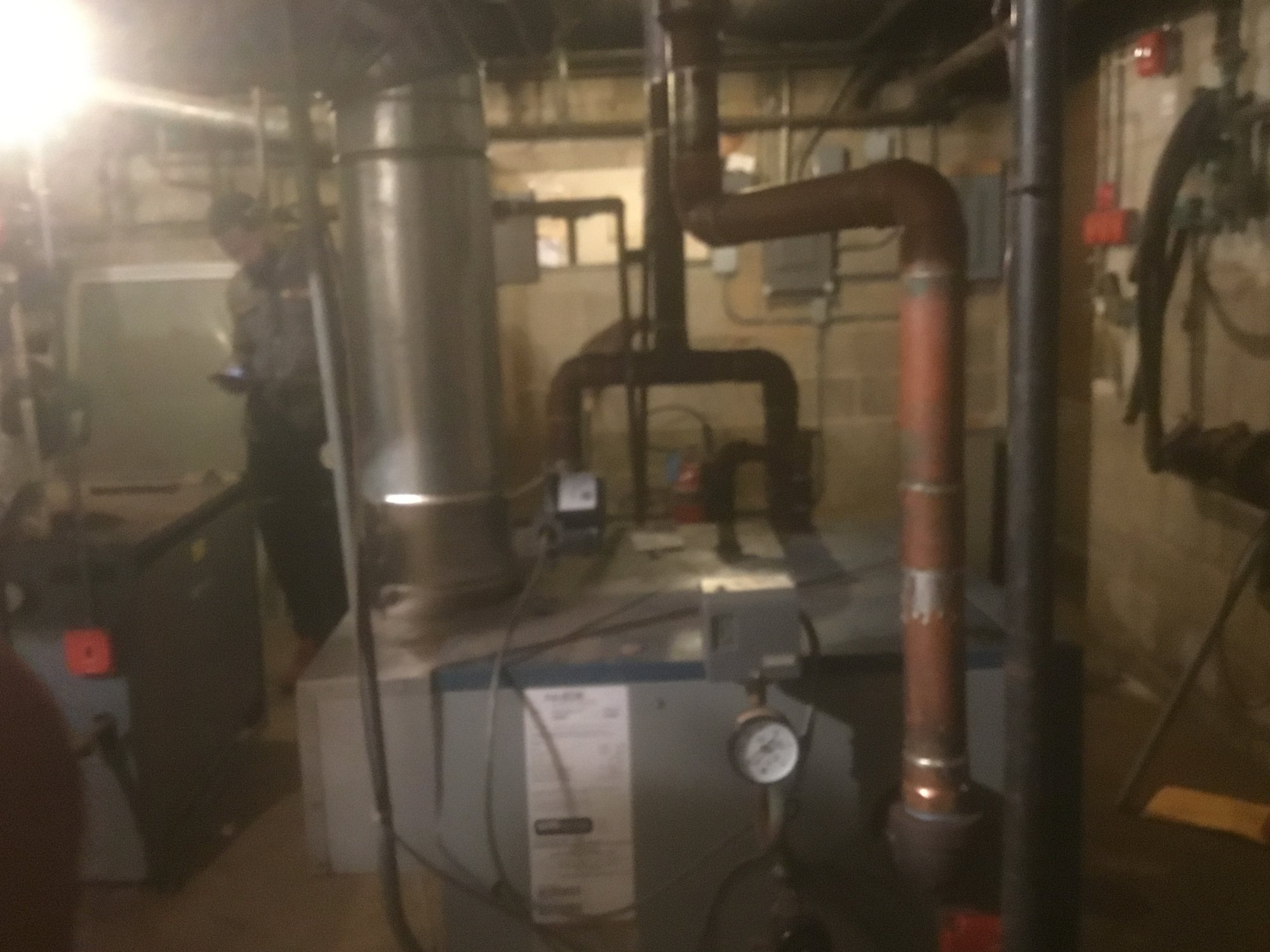











0
Comments
-
Last two pics were the old boiler0
-
30 Gallons per day? That's about 29.85 gallons per day too much, unless you have a consumptive process somewhere -- and if you do, I hope you are treating the water.
The change in boiler power won't affect the leak rate, although a new boiler will at least have eliminated some possibilities. Not building pressure isn't necessarily a problem -- a well matched system may not build much. I almost wonder if there isn't a drip or bit of wet return somewhere which got redirected to a drain.Br. Jamie, osb
Building superintendent/caretaker, 7200 sq. ft. historic house museum with dependencies in New England0 -
What about the blue zone valve do you see all that rust on top, do you think that was leaking, obviously that’s the 4 inch valve which isn’t working, the two inch is stuck open also. I am going to change the 2 inch next week, then work on getting parts for the 4 inch. The question is the steam was frozen, I’m going to also get new linkage since it didn’t look like that was maintained at all. I also discovered they had the wrong motor on the 4 inch valve. So on that if the stem doesn’t move I’m getting the correct motor, new linkage and stem repair kit.0
-
Jamie, i know changing the boiler doesn’t effect the leak, but the old boiler was cracked they were using over 900 gallons a week.0
-
Actually that blue zone valve, if it is leaking around the stem, might account for a good bit of it. It's surprising (maybe not?) how much water can be lost from even a drip drip drip. Which would be quite invisible if it were steam.
I'm not surprised the old boiler gave up at 900 gallons a week!Br. Jamie, osb
Building superintendent/caretaker, 7200 sq. ft. historic house museum with dependencies in New England0 -
@Snowmelt
piping looks good drop headers are not mandatory and you don't need pressure to heat a building0 -
Thanks Jamie, I feel I am on the right track.
The other issue is that a bigger boiler required 8 inch flue instead of 7. Would be fine if it was going in the chimney. But it’s going in double wall 7 inch. When it shuts off sometimes the dumber closes and trips the spill switch, when it’s open all the time it doesn’t trip.0 -
I'm just a homeowner but from what I have learned on this site I thought that copper above the waterline on a steam boiler was a no-no. Could you be loosing water from broken joints on the copper lines?0
-
about the copper, it’s existing but only two inch, it should be a least 3 inch. The original was 4 inch. I want to get it somewhat working first. It’s also a money thing. As a business man I know to do the whole job it will take x amount. But I know the private school can’t afford it. But later I can add 3 or 4 inch pipe and charge a little at a time.0
-
If you can't afford to do it right, then how can you afford to do it twice?0
-
amservice to answer your question, without discussing prices, and i am not going into detail. if i say $20,000 to do a job i would get questioned by management and they will get someone else. if i say $14,000 and then go back a few month later to update piping for x amount, instead of doing it all at the same time it gets by management.
its also cash and flow, if they dont have cash on hand they cant do the job.0 -
Was the old boiler leaking?
It sounds like your still losing the same amount of water, so I can only assume that the old boiler was not the problem. Maybe the fix could have been done for less then the cost of replacing the boiler.
If you know it's going to cost $$$$ to fix the problem, you should be able to justify the price.
Giving a $$$ price, not fixing the problem and having to go back to them for that extra $ makes you look bad.
You know by now from being on this site for so long that under sized steam piping causes all kinds of problems and copper on steam supplies doesn't hold up.
Your header is under sized and you put copper back in.
Wasn't your first post on this job asking about the 4" zone valve?
Its visibly leaking with rust damage.
Why did you decide the boiler was bad and the valve was ok to keep?
If you cant find a leak on a steam system, try repacking the radiators valves, replacing air vents and steam traps first.
Probably only cost $ in comparison.1 -
Boiler literally fell apart at or just above burner tray, when I first went there the electronic ignition was rusted away , I put a new one on- it started then that’s when the fun began at losing 900 gallons a week and having the autofill stoping. I did find a few leaks but I know the boiler was shot from the smoke up the chimney. And that was the second block that was under warranty.0
-
over 1 gallon per hour shouldn’t be that hard to find.
Building pressure would only make it leak faster. I have visible evidence of former leaks from before I bought the home and minor leaks that all but disappear under 0.5psi. I use about less than 1/2 gallon on a 600 EDR system.
How many emitters does it have? Need to check the unions and valve stems on all of them. Might just need to be snugged down a little if your lucky.
Wet returns?
Maybe take a hygrometer and go around hte building while it’s running. Should see a humidity spike where there’s a leak.
On a cool day, you might see one room that has fogged windows and others that do not.0 -
What kind of radiators are in there?
Are there section of the system that pass through concrete walls that aren't sleeved?
Hows the air getting out and what's stopping the steam from following?0 -
Good questions, there your typical cast iron radiators, nothing going through concrete wall. I like the hygrometer idea.
I do have two questions:
1. When I get the zone valves working I should be able to shut one side off and get some pressure in one side of building then maybe see a leek.
2. On the supply there was a half in tapping, can I make a drop off of it and put a bigger gauge but with less psi to have better accuracy? Does anyone have a picture of this?0 -
2 pipe radiators with steam traps?
Investigate around all of the radiator valves and between the sections.
Pay attention to the path steam takes as its filling the system. Steam will always take the path of least resistance and naturally find the easiest way out. Might just lead you in the direction of the biggest leaks.
As long as your getting steam to all the radiators, I wouldn't worry so much about building pressure.
The #1 thing you need to worry about is getting that water usage way down.0 -
Starts off with 1 pipe system at the beginning with 2 risers. The risers have zone valves and going to different sections of the building, not that we stared at each individual radiator but it could be leaking then turning to steam. I will say that the system was ignored and some of them are frozen open.
I went off subject where the one side of building has a condensation pump and a steam trap.
The other side of building doesn’t have a condensation pump but Has a lot of liner feet of steam pipe and has at least 4 steam traps.0 -





0 -
Is it a pumped return or a gravity return?
Does the condensate pump send water straight to the boiler or to a condensate receiver tank where it returns by gravity?
If steam traps are stuck open, you could be losing a lot of steam out the vent on the condensate pump.0 -
The picture are of before and after blocks, the an heat exchanger blower motor, with thr blower motor on a strap on aqua stat.
Then a steam trap that I didn’t change last year. Then a normal rad like every other room in the building.
0 -
No on gravity return, it’s pumping all the way back, it goes on a lot. I don’t think that the condensation pump has a vent going to fresh air.0
-
You better have a vent on the condensate pump or else it could explode.
Better double check that.
How does the air get out of the radiators with steam traps?0 -
Steam traps are after the rads, I’m not really sure proper operation of steam traps and condensation pump since this is the first with a condensation pump. I’m almost positive that the original air vent is capped but I could be wrong.
0 -
In a 2 pipe system, the steam trap acts as the air vent, but instead of venting into the room like radiator air vents, the air is vented into the dry return. At the end of the dry return you will find the main air vent. Or in your situation the condensate receiver tank that should have an open vent.
Steam traps, trap steam. When steam hits the steam trap, it closes trapping steam in the radiator where it can condense back to water.
The condensate will cool the steam trap enough for it to reopen and allow the condensate to drain back to the boiler or condensate pump.
In the condensate receiver tank, there is a float activated switch. When tank is full, the switch turns the pump on and condensate returns to the boiler.
If the trap fails, steam can enter the dry return and out your main vent.
Change the trap cartridges, I would replace radiator vent and for peace of mind re pack radiator valves.0 -
At this point it may be a good idea to air pressure test the whole system at 4-5 psi0
Categories
- All Categories
- 87.3K THE MAIN WALL
- 3.2K A-C, Heat Pumps & Refrigeration
- 61 Biomass
- 427 Carbon Monoxide Awareness
- 119 Chimneys & Flues
- 2.1K Domestic Hot Water
- 5.8K Gas Heating
- 115 Geothermal
- 165 Indoor-Air Quality
- 3.7K Oil Heating
- 76 Pipe Deterioration
- 1K Plumbing
- 6.5K Radiant Heating
- 395 Solar
- 15.6K Strictly Steam
- 3.4K Thermostats and Controls
- 56 Water Quality
- 51 Industry Classes
- 50 Job Opportunities
- 18 Recall Announcements

